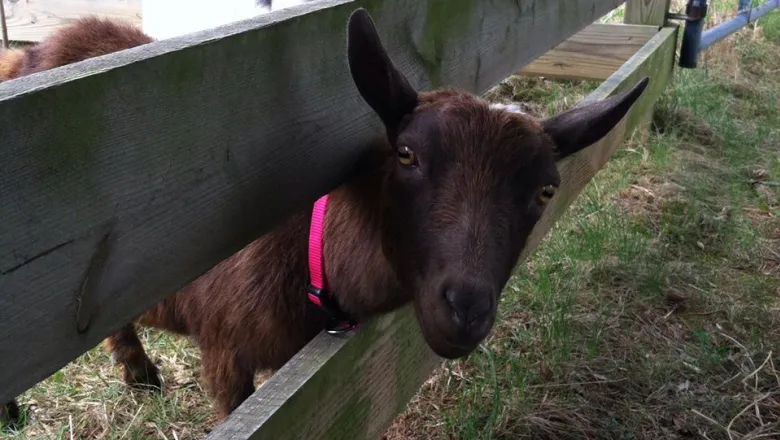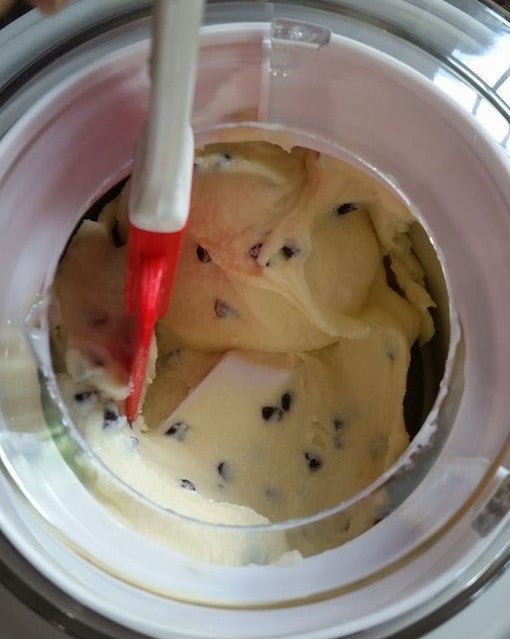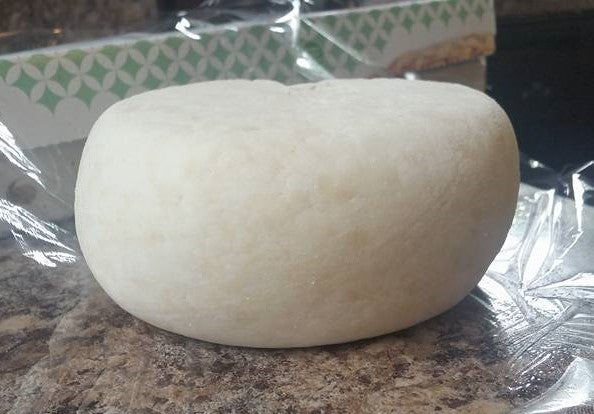Dairy Goat Breeds: Which One is Right for Your Farm?

Educator Resources
What are the different dairy goat breeds?
Chevre is one of the most common cheeses made from goat milk and can be found in most grocery stores. Many of us enjoy this delectable soft cheese, but don’t know much about the breed behind it. Having a little background information into the species will help give you some insight.
Some farms work to produce the products you see on grocery store shelves. These herds can range in size and can even be as large as 8,000 head (wisfarmer.com). They are also a popular choice for homesteads or small farms looking to have their own source of dairy products for personal use. Homestead and small farm herd sizes can remain relatively small and can include one or two bucks. This species is a popular choice for dairy production because they are easy to handle and can be kept in smaller parcels of land. A small herd of 3-4 “in-milk” can supply a small family with enough milk for drinking, cheese making, ice cream and for making milk soap.

Here is a look at some facts and breeds, their milk production and common cheeses.
What are Some Facts?
- They are browsers, not grazers. This means they are selective eaters and prefer shrubs over grasses.
- Their gestation is between 146-155 days, depending on breed.
- Babies are called “kids”. A young intact male is called a “buckling”. A young female is called a “doeling”. A female that has “kidded” is called a “doe”. An intact male is called a “buck”.
- They may or may not be born with horns. A goat that will not have horns is called “polled”.
- They do not like to get wet. They will run for shelter at the first sign of rain.
- They are ruminants. This means food is digested in two steps. First by eating and regurgitating a semi-digested form known as “cud”, then eating the cud.
- Wisconsin and California have the largest dairy herds.
What are the Different Breeds?
- Alpine. Alpine does are at least 30 inches tall and weigh around 135 pounds. Have erect ears and come in many color combinations. Known as a hardy breed and can thrive in any climate.
- Lamancha. Lamacha does are at least 28 inches tall and weigh around 130 pounds. They have very short ears and come in any color and any color combination. They are known for their calm nature and do well in a variety of climates.
- Nigerian Dwarf. Nigerian Dwarf does are at least 17 inches tall and average around 75 pounds. They have erect ears and come in any color combination. Even though they are small, they are known to produce a proportionate quantity of milk with high butterfat content.
- Nubian. Nubian does are at least 30 inches tall and weigh around 135 pounds. Their ears are large and hang down, flaring out at the bottom. They may be any color and can come solid or patterned. They are also known for high butterfat and protein content.
- Oberhasli. Oberhasli does are at least 28 inches tall and weigh around 120 pounds. They come in the distinctive color called “Bay”, but range in light to deep red bay with black markings. They have erect ears and are known for having calm dispositions.
- Saanen. Saanen does are at least 30 inches tall and weigh around 135 pounds. They are distinctly white and they have erect ears. They are a favorite for commercial dairies due to the high volume of milk they produce and their calm temperament.
- Sable. Sable does are at least 30 inches tall and weigh around 135 pounds. They are any color combination and have erect ears. Sables have high milk production and calm temperament, similar to the Saanen.
- Toggenburg. Toggenburg does measure at least 26 inches tall and weight around 120 pounds. They have erect ears and carry forward. Their colors range from light fawn to dark chocolate with white or cream markings. They are one of the first purebred dairy goats to be imported into the United States and registered.
What is the Milk Production by Breed?
The amount of milk produced by the different breeds can have a large range. Here is a chart showing the range the breed can produce in pounds and the percent of butterfat and protein per pounds of milk.
| Doe Breed | Range (lbs./year) | Butterfat %/lbs | Protein %/lbs |
| Alpine | 750-5750 | 3.3/89 | 2.9/78 |
| Lamancha | 830-4120 | 3.7/85 | 3.2/72 |
| Nigerian Dwarf | 220-2110 | 6.4/51 | 4.4/35 |
| Nubian | 510-3840 | 4.9/99 | 3.8/77 |
| Oberhasli | 1120-3050 | 3.7/73 | 3.0/60 |
| Saanen | 920-4870 | 3.3/89 | 2.9/79 |
| Sable | 1540-3120 | 3.3/79 | 2.9/68 |
| Toggenburg | 1090-3840 | 3.1/70 | 2.9/64 |
Based on 2019 ADGA DHIR Individual Doe Records. Adga.org
The range of milk production can be quite large for each breed. This is due to many factors like genetics, climate, feed, intake, etc. The percent butterfat is pretty even across breeds with the exception of Nigerian Dwarf and Nubian breeds. These two breeds are known for their high butterfat content which is sought after when making cheese, butter and ice cream. Goat milk is a source of high quality protein and is significantly lower in levels of alpha-S1-casein, which may be one of the reasons why it is better tolerated by some people with sensitivities.

Download a PDF version of the infographic.

What are the Different Types of Cheese?
- Chevre. This classic cheese is soft, delicious and very versatile. It is also simple to make! The ingredients consist of pasteurized milk and chevre culture and salt. Some people have even made chevre from milk and lemon juice! The lemon juice separates the whey and soft curds are formed. The curds are then hung in cheesecloth to drain the rest of the whey. Salt is then added and the cheese is refrigerated. Chevre can also be flavored with fresh herbs and spices.
- Feta Cheese. Feta cheese is made from sheep milk or from a mixture of sheep and goat milk. They have a higher percentage of fatty acids known as capric, caprylic and caproic acid than cow’s milk. These fatty acids are what contribute to the distinctive sharp taste and smell. Feta cheese is made from a combination of milk, buttermilk, liquid rennet and salt.
- Mozzarella Cheese. Mozzarella cheese is known for its mild taste and use with Italian dishes. This favorite can be made by adding liquid rennet and citric acid powder. When making mozzarella, the process consists of specific cooking temps and rest times. When steps of a recipe are followed correctly, the cheese is pulled like taffy and then shaped into a ball.
- Ricotta Cheese. Ricotta cheese can be made in only 15 minutes and is super easy. Ingredients consist of milk, apple cider vinegar and salt. Like all cheeses, there is a specific process of cooking time, temperature and rest time. Ricotta, similar to Chevre, is one of the easiest to make.
Hard cheese can also be made but are not as common as soft cheeses. The flavor of a hard cheese becomes less tangy and may be described as sweet, nutty or even sharp. The process of making hard cheese involves more steps and equipment, time and correct pressure. Sterilization of equipment is extremely important as well as proper aging temperature. Beginners usually begin with soft cheese and then move to experiment with hard cheese.

There are many breeds with varying production ranges, butterfat and protein content. While there are larger farms producing milk for commercial use, the species continues to be a popular choice for homesteads and small farms. Either way, you can choose to enjoy the delectable cheeses that can be made. If you cannot find these cheeses at your local store, you can look for small farms in the area that are permitted to sell their products either off the farm or at local farmers markets.
If you are considering selling milk products, check with your local USDA or Extension office for regulations that may apply to your state.
Resources: ADGA.org, cheesemaking.com, everything-goat-milk.com, Florida A&M University, wisfarmer.